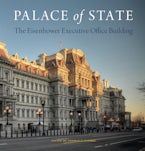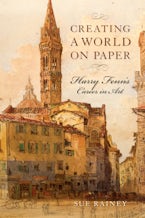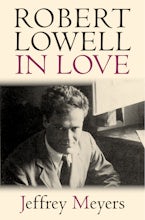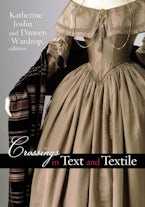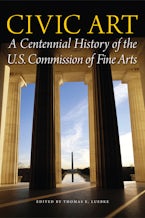- Home
- Studies in Print Culture and the History of the Book
- American Architects and Their Books, 1840-1915
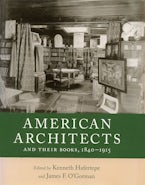
American Architects and Their Books, 1840-1915
Edited by Kenneth Hafertepe and James F. O'Gorman
Published by: University of Massachusetts Press
Series: Studies in Print Culture and the History of the Book
320 Pages, x 1.20 in
Other Retailers:
Since the Renaissance, architects have been authors and architecture has been the subject of publications. Architectural forms and theories are spread not just by buildings, but by the distribution of images and descriptions fed through the printing press. The study of an architect's library is an essential avenue to understanding that architect's intentions and judging his or her achievements.
In this well-illustrated volume, a chronological sequel to American Architects and Their Books to 1848, twelve distinguished historians of architecture discuss from various points of view the books that inspired architects both famous and not-so-famous, and the books the architects themselves produced. They examine the multifaceted relationship of nineteenth- and early twentieth-century architects to print culture—the literary works that architects collected, used, argued over, wrote, illustrated, designed, printed, were inspired by, cribbed from, educated clients with, advertised their services through, designed libraries for, or just plain enjoyed. The result is a volume that presents the intersection of the history of architecture, the history of ideas, and the history of the book. Changes in print culture during this period had a significant impact on the architectural profession, as revealed in these well-informed scholarly essays.
In addition to the editors, contributors include Jhennifer A. Amundson, Edward R. Bosley, Ted Cavanagh, Elspeth Cowell, Elaine Harrington, Michael J. Lewis, Anne E. Mallek, Daniel D. Reiff, Earle G. Shettleworth, Jr., and Chris Szczesny-Adams. Among the architects discussed are A. J. Downing, Charles Sumner Greene, James Sims, Samuel Sloan, John Calvin Stevens, Thomas U. Walter, and Frank Lloyd Wright.
In this well-illustrated volume, a chronological sequel to American Architects and Their Books to 1848, twelve distinguished historians of architecture discuss from various points of view the books that inspired architects both famous and not-so-famous, and the books the architects themselves produced. They examine the multifaceted relationship of nineteenth- and early twentieth-century architects to print culture—the literary works that architects collected, used, argued over, wrote, illustrated, designed, printed, were inspired by, cribbed from, educated clients with, advertised their services through, designed libraries for, or just plain enjoyed. The result is a volume that presents the intersection of the history of architecture, the history of ideas, and the history of the book. Changes in print culture during this period had a significant impact on the architectural profession, as revealed in these well-informed scholarly essays.
In addition to the editors, contributors include Jhennifer A. Amundson, Edward R. Bosley, Ted Cavanagh, Elspeth Cowell, Elaine Harrington, Michael J. Lewis, Anne E. Mallek, Daniel D. Reiff, Earle G. Shettleworth, Jr., and Chris Szczesny-Adams. Among the architects discussed are A. J. Downing, Charles Sumner Greene, James Sims, Samuel Sloan, John Calvin Stevens, Thomas U. Walter, and Frank Lloyd Wright.
Kenneth Hafertepe is associate professor of museum studies at Baylor University. James F. O'Gorman is Grace Slack McNeil Professor of the History of Art Emeritus at Wellesley College.
"This is an important work at the intersection of architectural history and the history of the book. . . . It will appeal to a diverse group of scholars interested in the built environment of North America, the development of the architectural profession, the transmission of ideas, and the myriad ways in which these phenomena were shaped by books."—Martha McNamara, University of Maine
"Taken with the first volume, these essays tell a compelling story of the maturing of the architectural profession in America and its link with the world of books, which indeed would seem to be essential to their work and thought."—Eleanor Thompson, National Endowment for the
Humanities Librarian, retired, The Winterthur Library
"American Architects and Their Books, 1840-1915, is a fascinating contribution to the history of the book. . . . The result is a coherent and rich discussion of book and print culture and the role it played in forging the architect's profession. . . . This entire collection, in fact, is a joy to read. It is also a joy to look at as the book includes more than one hundred illustrations depicting building plans, architectural details, interiors, and portraits of the architects. Several essays also include helpful appendices listing architects' book inventories."—H-Net Reviews
"American Architects and Their Books provides multiple perspectives on the nexus of print culture and the built environment. . . . Individuals form the focus of this volume, but their participation in print culture comprises a greater narrative that helps fill a void in the history of the book. . . . By directly addressing the professional use of texts along with related matters, American Architects and Their Books, 1840–1915 affords valuable insights into American book culture."—Libraries and the Cultural Record




